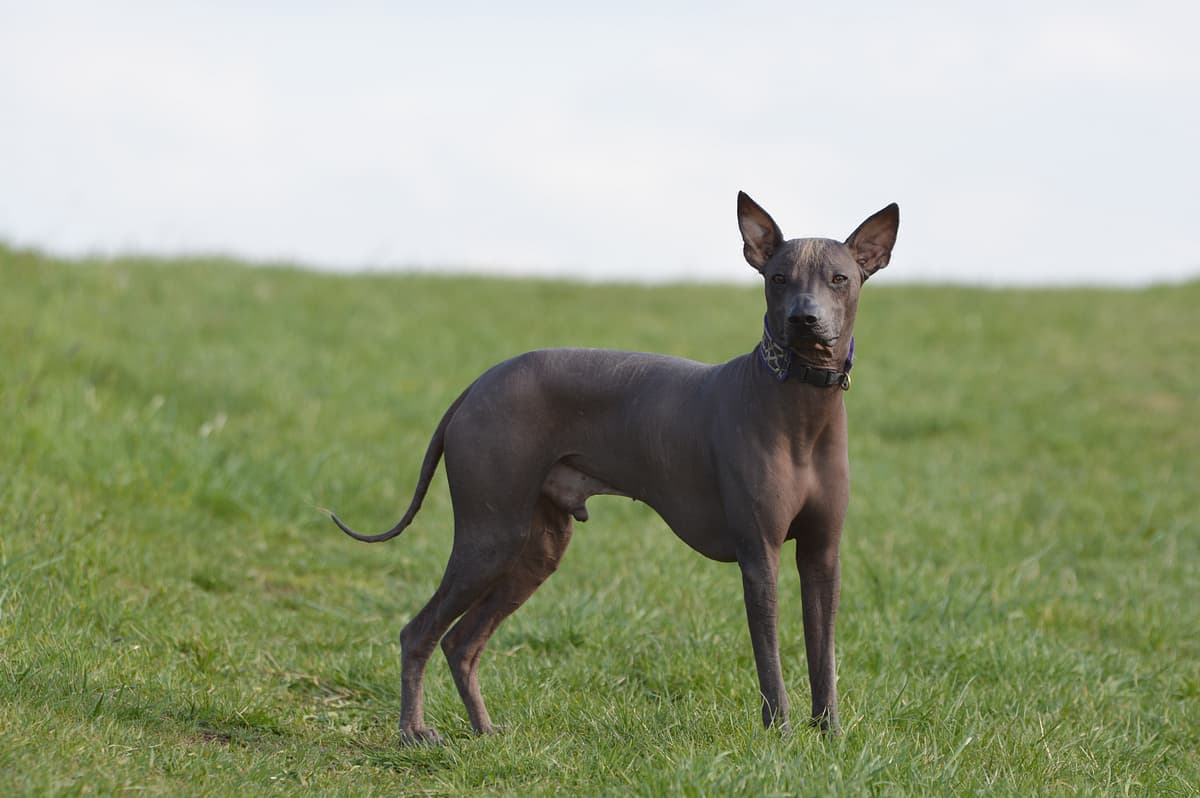Peruvian Hairless Dog vs English Bulldog
Discover the differences between Peruvian Hairless Dog and English Bulldog to make the best choice for your situation.
Try different breeds

Peruvian Hairless Dog
Elegant, affectionate, and alert, this ancient breed thrives as a loyal companion. Its hairless body and sensitive nature make it both striking and loving in the home.

English Bulldog
Stocky, courageous, and affectionate, this breed charms with its wrinkled face and calm nature. Loyal and gentle, it thrives as a loving family companion.
Quick comparison
Medium
8–12 kg
Hairless, smooth skin
12–14 years
7–11 kg
Moderately active
Medium
23–25 kg
Short, smooth
8–10 years
18–23 kg
Low activity needs
Personality & behavior
Compare the personality traits and behavioral characteristics of both breeds.
Peruvian Hairless Dog
Generally sociable but may be reserved with strangers
Learns quickly and responds well to training
Moderate activity needs, enjoys regular exercise
Occasionally playful, but not overly boisterous
Adapts well to various home environments
English Bulldog
Affectionate and gentle with family and children
Learns basic commands with some patience
Prefers lounging over vigorous physical activity
Enjoys play but tires fairly quickly
Adjusts well to most living environments
Care needs
Exercise, grooming, and daily care requirements
Peruvian Hairless Dog
Skin problems, dental issues
English Bulldog
Brachycephalic syndrome, skin fold infections
Suitability
How well each breed fits different living situations and families
Peruvian Hairless Dog
Moderately suitable
Sensitive and intelligent, but may need patient training from inexperienced owners
Good fit
Quiet and clean, adapts well to smaller living spaces with enough exercise
Highly suitable
Enjoys regular physical activity and will keep up with energetic routines
Use caution
Can be gentle but may not tolerate rough handling from very young children
Selective companion
May get along with other pets if socialized early, but can be wary
Not ideal
Strong attachment to people can cause stress when left alone for long periods
English Bulldog
Good option
Easygoing, low-maintenance nature suits owners with limited dog experience
Excellent fit
Moderate exercise needs and calm demeanor work well in small living spaces
Not ideal
Low stamina and breathing issues make them unsuited for high-activity lifestyles
Very suitable
Gentle, patient, and tolerant with young children when properly socialized
Usually compatible
Generally sociable but may need guidance with other pets, especially dogs
Not recommended
They struggle with long periods alone and are prone to separation anxiety
Breed strengths
What each breed excels at and their best qualities
Peruvian Hairless Dog
- Loyal and strongly bonds with family
- Minimal shedding due to hairless coat
- May be hypoallergenic for some owners
- Intelligent and quick to learn commands
- Generally alert and makes a good watchdog
English Bulldog
- Affectionate with family members
- Generally good with children
- Low exercise requirements
- Minimal grooming needs
- Adaptable to apartment living
Challenges & considerations
Potential challenges and considerations for each breed
Peruvian Hairless Dog
- Sensitive skin requires sun protection
- Prone to dental issues from missing teeth
- Can be wary of strangers or new situations
- Needs regular moisturizing to prevent dry skin
- Sensitive to cold and temperature changes
English Bulldog
- Prone to respiratory problems
- High risk of overheating
- Susceptible to skin infections
- Can be stubborn during training
- Tends to drool frequently
Ready to choose your perfect breed?
Learn more about each breed or compare other breeds to find the perfect match for your lifestyle.
Discover more helpful tools
Make use of our other free tools to get the most out of your pet experience
